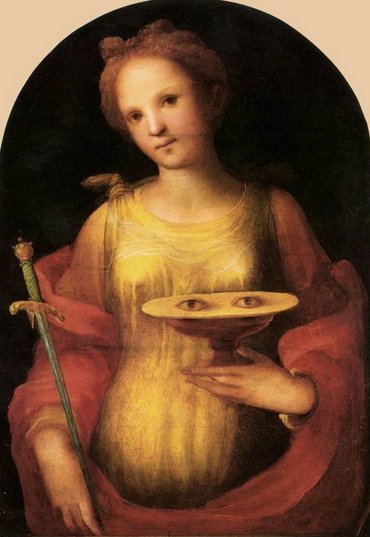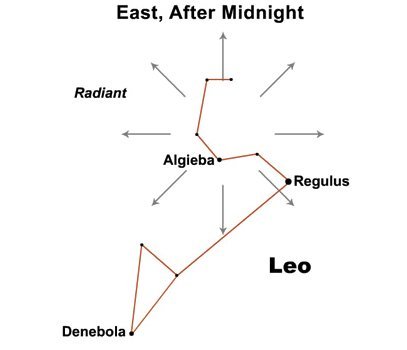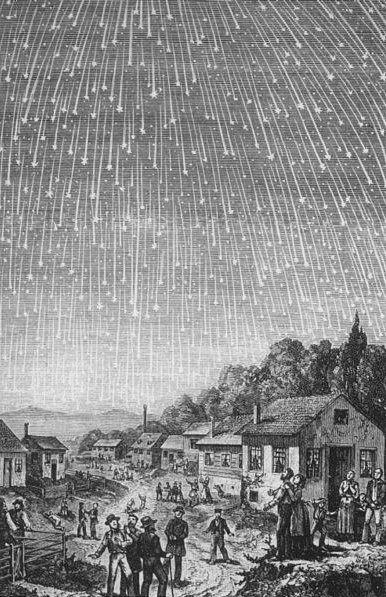Cosmos is synchronous - everything dances in
coordination. This fact is exemplified by
how in the morning all nature comes alive.
The birds start to sing when the daylight
returns in the east. Before that the night
has been silent,
but then someone breaks through the shadows
and the sky roof will be uplifted (propped
up), become a raised-up sky.
.jpg)
 |
 |
  |
|
kahi |
| Kahi.
Tuna; two sorts:
kahi aveave, kahi
matamata. Vanaga.
Mgv.: kahi, to
run, to flow. Mq.:
kahi, id. Churchill.
Rangitokona, prop
up the heaven! //
Rangitokona, prop up
the morning! // The
pillar stands in the
empty space. The thought
[memea] stands in
the earth-world - //
Thought stands also in
the sky. The kahi
stands in the
earth-world - // Kahi
stands also in the sky.
The pillar stands, the
pillar - // It ever
stands, the pillar of
the sky. (Moriori
creation myth according
to Legends of the South
Seas.) |
|
 |
|
Tahi. Other;
te tahi tagata
someone else; te tahi
hoki ... and others
again...; te tahi...
te tahi..., some...
others; te tahi atu,
the rest of them.
Tahitahi, to scrape
with a sharpened stone.
Vanaga. One, only,
simple; te tahi,
next; e tahi,
anyone; e tahi no,
unique, unity; e tahi
e tahi,
simultaneous. P Mgv.:
Mq., Ta.: tahi,
one. Churchill. |
Kihikihi,
lichen; also: grey, greenish
grey, ashen. Vanaga. Kihikihi,
lichen T, stone T. Churchill.
The Hawaiian day was divided in
three general parts, like that
of the early Greeks and Latins,
- morning, noon, and afternoon -
Kakahi-aka, breaking the
shadows, scil. of night;
Awakea, for Ao-akea,
the plain full day; and
Auina-la, the decline of the
day. The lapse of the night,
however, was noted by five
stations, if I may say so, and
four intervals of time, viz.:
(1.) Kihi, at 6 P.M., or
about sunset; (2.) Pili,
between sunset and midnight; (3)
Kau, indicating midnight;
(4.) Pilipuka, between
midnight and surise, or about 3
A.M.; (5.) Kihipuka,
corresponding to sunrise, or
about 6 A.M. ... (Fornander)
|
NIGHT |
|
Kihi (6 pm) |
Piri
|
Kau (12 pm) |
Piri-puta |
Kihi-puta (6 am) |
|
 |
|
DAY |
|
Ka-tahi-ata |
Ao-atea |
Au-ina-ra |
Light was first established high up and then
brought down to us by the Stag:
|
NOV
24 (199 + 129 = 328) |
25
(210 - 64 = 146) |
26 (131 - 64 + 183 + 80) |
27 (148 = 331 - 183) |
 |
 |
 |
 |
|
Ca5-24 |
Ca5-25
(130) |
Ca5-26 |
Ca5-27 |
|
tuu te rima i ruga |
etoru kahi |
|
CLOSE TO THE FULL MOON: |
|
Āshleshā-9 (Embrace) /
Willow-24 (Stag)
π¹ Ursa Majoris,
δ HYDRAE (129.6),
AL MINHAR AL SHUJĀ
= σ Hydrae,
MUSEIDA
= π² Ursae Majoris
(129.9)
RAS ALHAGUE (α Ophiuchi) |
Al Nathrah-6 (Gap)
BEEHIVE (Exhalation of Piled-up Corpses)
= ε Cancri,
η Pyxidis (130.4),
XESTUS = ο Velorum
(130.5), ζ Pyxidis (130.7),
ASCELLUS BOREALIS = γ Cancri, β Pyxidis (130.9)
*89.0 = *130.4 - *41.4 |
Extended Net-26a (Ox) /
Arkū-sha-nangaru-sha-shūtu-12
(Southeast Star in the Crab)
η
Hydrae (131.0),
ASCELLUS AUSTRALIS =
δ
Cancri
(131.4),
KOO SHE (Bow
and Arrow)
=
δ
Velorum
(131.6),
α
Pyxidis (131.8),
ε
Hydrae (131.9)
*90.0 = *131.4 - *41.4 |
ι Cancri (132.0),
ρ Hydrae (132.4)
*91.0 = *132.4 - *41.4 |
|
... He is bound to it with
willow
thongs in the 'five-fold
bond' which joins wrists,
neck, and ankles together
...

... They
were Ranginui, the
Sky Father, and
Papatuanuku, the Earth
Mother, both sealed together
in a
close embrace.
Crushed between the weight
of their bodies were their
many children, whose
oppression deepened. They
yearned to be free; they
fought their parents and
each other to break loose.
Tuumatauenga, virile
god of war, thrust and
shouted; Tangaroa of
the oceans whirled and
surged;
Tawhirirangimaatea,
Haumiatiketike and
Rongomatane, of wild
foods and cultivated crops,
tried their best but were
not successful; and
Ruamoko, god of
earthquakes, yet to be born,
struggled in the confinement
of his mother's womb ... Of
them all, Taane Mahuta
[cfr Mahute, Boussonetia
papyrifera], the god of
the forests, was the most
determined; he set his
sturdy feet upon his
father's chest, and braced
his upper back and shoulders
against the bosom of his
mother. He pushed; and they
parted.
So the
world, as the Maori
understand it, came into
being ...
... A man had
a
daughter who possessed a
wonderful bow and arrow,
with which she was able to
bring down everything she
wanted. But she was lazy and
was constantly sleeping. At
this her father was angry
and said: 'Do not be always
sleeping, but take thy bow
and shoot at the navel of
the ocean, so that we may
get fire.' The navel of the
ocean was a vast whirlpool
in which sticks for making
fire by friction were
drifting about. At that time
men were still without fire.
Now the maiden seized her
bow, shot into the navel of
the ocean, and the material
for fire-rubbing sprang
ashore. Then the old man was
glad. He kindled a large
fire, and as he wanted to
keep it to himself, he built
a house with a door which
snapped up and down like
jaws and killed everybody
that wanted to get in. But
the
people knew that he was in
possession of fire, and the
stag determined to steal it
for them. He took
resinous wood, split it and
stuck the splinters in his
hair. Then he lashed two
boats together, covered them
with planks, danced and sang
on them, and so he came to
the old man's house. He
sang: 'O, I go and will
fetch the fire.' The old
man's daughter heard him
singing, and said to her
father: 'O, let the stranger
come into the house; he
sings and dances so
beautifully.' The stag
landed and drew near the
door, singing and dancing,
and at the same time sprang
to the door and made as if
he wanted to enter the
house. Then the door snapped
to, without however touching
him. But while it was again
opening, he sprang quickly
into the house. Here he
seated himself at the fire,
as if he wanted to dry
himself, and continued
singing. At the same time he
let his head bend forward
over the fire, so that he
became quite sooty, and at
last the splinters in his
hair took fire. Then he
sprang out, ran off and
brought the fire to the
people ...

 |
This was allowed to happen only by cause
of Lucia; she made a sacrifice - like
Antinous. And like the Bull who became
an Ox:
... In late September or
early October 130, Hadrian and his
entourage, among them Antinous, assembled at
Heliopolis to set sail upstream as part of a
flotilla along the River Nile. The retinue
included officials, the Prefect, army and
naval commanders, as well as literary and
scholarly figures. Possibly also joining
them was Lucius Ceionius Commodus, a young
aristocrat whom Antinous might have deemed a
rival to Hadrian's affections. On their
journey up the Nile, they stopped at
Hermopolis Magna, the primary shrine to the
god Thoth. It was shortly after this, in
October [in the year A.D.] 130 - around the
time of the festival of Osiris - that
Antinous fell into the river and died,
probably from drowning. Hadrian publicly
announced his death, with gossip soon
spreading throughout the Empire that
Antinous had been intentionally killed. The
nature of Antinous's death remains a mystery
to this day, and it is possible that Hadrian
himself never knew; however, various
hypotheses have been put forward.
One possibility is that
he was murdered by a conspiracy at court.
However, Lambert asserted that this was
unlikely because it lacked any supporting
historical evidence, and because Antinous
himself seemingly exerted little influence
over Hadrian, thus meaning that an
assassination served little purpose. Another
suggestion is that Antinous had died during
a voluntary castration as part of an attempt
to retain his youth and thus his sexual
appeal to Hadrian. However, this is
improbable because Hadrian deemed both
castration and circumcision to be
abominations and as
Antinous was aged between 18 and 20 at the
time of death, any such operation would have
been ineffective.
A third possibility is
that the death was accidental, perhaps if
Antinous was intoxicated. However, in the
surviving evidence Hadrian does not describe
the death as being an accident; Lambert
thought that this was suspicious. Another
possibility is that Antinous represented a
voluntary human sacrifice. Our earliest
surviving evidence for this comes from the
writings of Dio Cassius, 80 years after the
event, although it would later be repeated
in many subsequent sources. In the second
century Roman Empire, a belief that the
death of one could rejuvenate the health of
another was widespread, and Hadrian had been
ill for many years; in this scenario,
Antinous could have sacrificed himself in
the belief that Hadrian would have
recovered.
Alternately, in Egyptian
tradition it was held that sacrifices of
boys to the Nile, particularly at the time
of the October Osiris festival, would ensure
that the River would flood to its full
capacity and thus fertilize the valley; this
was made all the more urgent as the Nile's
floods had been insufficient for full
agricultural production in both 129 and 130.
In this situation, Hadrian might not have
revealed the cause of Antinous's death
because he did not wish to appear either
physically or politically weak. Conversely,
opposing this possibility is the fact that
Hadrian disliked human sacrifice and had
strengthened laws against it in the Empire
...

|
14 |
DEC 12 (331 + 15 = 346) |
LUCIA |
DEC 14 |
15 (349) |
 |
 |
 |
 |
|
Ca6-7 (132 + 15) |
Ca6-8 (148) |
Ca6-9 |
Ca6-10 |
|
etoru kiore |
te henua te rima |
|
CLOSE TO THE FULL MOON: |
|
VATHORZ PRIOR = υ Carinae
(147.9)
Aug 15 (227) |
υ¹ Hydrae (148.4),
RAS
ELASET BOREALIS (Northern Head
of the Lion)
=
μ
Leonis
(148.7)
*107.0 = *148.4 - *41.4
Aug 16 (187 + 41) |
TSEEN KE (Heaven's Record)
=
φ
Velorum
(149.9)
Aug 17 (229) |
ν Leonis (150.1), π Leonis
(150.6)
Aug 18 (150 +
80) |
|
CLOSE TO THE SUN: |
|
JUNE 12 (163) |
13 (347 - 183) |
JUNE
14 (165) |
15 |
|
Febr 14 (45 = 227 - 182)
θ Piscis Austrini (330.1), λ
Oct. (330.7)
All Hearts' Day |
Febr 15 (46 = 411)
KUH (Weeping) = μ Capricorni
(331.4),
γ
Gruis (331.5)
*290.0 = *331.4 - *41.4 |
Febr 16 (229 + 183)
no star listed (332) |
Febr 17 (14 * 29½)
Piscis Austrini (333.4)
*292.0 = *333.4 - *41.4 |
Then the 4th Son behind the King arrived beyond the
end of the Extended Net:
|
6 |
22
(6 + 350 = 355 + 1) |
23
(200 + 157) |
DEC 24
(2 * 179) |
25
(199 + 160) |
 |
 |
 |
 |
|
Ca6-17 (314 / 2) |
Ca6-18
(2 * 79) |
Ca6-19 |
Ca6-20 (160) |
|
tagata oho rima - ki te
marama |
koia kua oho |
ki te marama |
kua moe |
|
CLOSE TO THE FULL MOON: |
|
Extended Net-26b (Ox)
μ Hydrae
(157.1)
Aug 25
(237) |
Maru-sha-arkat-Sharru-15
(4th Son behind the King)
SHIR (Possessing Luminous
Rays)
=
ρ
Leonis
(158.9) |
p Carinae
(159.3)
Aug 27 (358 + 64 - 183) |
φ Hydrae
(160.3)
28 (240) |

... From
a point a little to the west
of ζ
[Adhafera, ζ
Leonis] and not much farther
from γ
- when first observed the
radiant point was in Cancer
- issue the Leonids,
the meteor stream of
November 9th to 17th, its
maximum now occurring on the
13th to 14th, which about
every thirty-three years has
furnished such wonderful
displays, the last in 1866
and the next due in 1899.
Their first noticed
appearance may have been in
the year 137, since which
date the stream has
completed fifty-two
revolutions. According to
Theophanes of Byzantium, the
shower was seen from there
in November, 472; but the
late Professor Newton, our
deservedly great authority
on the whole subject of
meteors, commenced his list
of the Leonids with their
appearance on the 13th of
October, 902, the Arabian
Year of the Stars, during
the night of the death of
King Ibrahim ben Ahmad, and
added: It will be seen that
all these showers are at
intervals of a third of a
century, that they are at a
fixed day of the year, and
that the day has moved
steadily and uniformly along
the calendar, at the rate of
about a month in a thousand
years ...
 |
|
CLOSE TO THE SUN: |
|
JUNE 22 (366 - 183) |
23 |
24 (ST JOHN'S DAY) |
25 |
|
Febr 24 (420 = 237 + 183)
δ Tucanae (340.1), ρ Cephei
(340.2), ν Gruis (340.3),
ζ Aquarii, δ Gruis (340.4),
5/1100 Lac. (340.7), σ
Aquarii, 6/650 Lac. (340.9)
PROCYON
(α Canis Minoris)
*299.0 = *340.4 - *41.4 |
25
υ Oct. (341.0), α/91 Lac.
(341.1),
HOMAN (Hero) = ζ Pegasi,
β Piscis Austrini (341.2), ν
Tucanae (341.5), υ Aquarii
(341.9) |
Febr 26 (57)
η Aquarii (342.1), σ Gruis
(342.4), SITULA (Water-jar) = κ
Aquarii
(342.7)
*301.0 = *342.4 - *41.4 |
27
ε Piscis Austrini (343.5), ο
Pegasi, β Gruis (343.8) |
 |
.jpg)
|
.jpg)
















.jpg)